APS Janet Taylor Spence Award for Transformative Early Career Contributions
The APS Board of Directors is pleased to announce the 2014 recipients of the APS Janet Taylor Spence Award for Transformative Early Career Contributions. The award recognizes the creativity and innovative work of promising scientists who represent the future of psychological science. This award is a fitting tribute to its namesake, Janet Taylor Spence, the first elected APS President. Spence’s distinguished career is characterized by both its empirical rigor and its innovative theoretical approach, which led her to develop widely used assessment techniques. The awards will be presented this month at the 2014 APS Annual Convention in San Francisco.
Alan Anticevic
Kurt Gray
J. Kiley Hamlin
Ethan F. Kross
Angelica Ronald
Leah H. Somerville
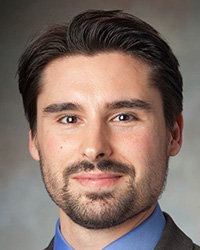 Alan Anticevic
Alan Anticevic
Yale University
What is the focus of your award-winning research?
Broadly, my lab focuses on cognitive neuroscience of psychiatric illness. We seek to better understand, at the neural system level, the mechanisms behind behavioral deficits in neuropsychiatric illness. Specifically, the research in our group focuses on understanding these processes in disorders such as schizophrenia, bipolar illness, and addiction. We use a combination of tools to characterize the underlying neural systems involved in cognitive operations such as working memory as well as their interaction with neural systems involved in affective processes, with the objective of understanding how these processes may go awry in the context of severe neuropsychiatric illness. Methodologically, my lab harnesses the combination of task-based, resting-state, pharmacological functional neuroimaging, as well as computational modeling approaches. Combining these approaches provides a way to mechanistically understand neural circuit dysfunction in psychiatric disorders. The overarching objective of the lab is to better characterize the underlying neural circuit dysfunction in complex mental illness, with the aim of developing better neural markers and informing rationally-guided treatments.
How did you develop an interest in this area?
Severe neuropsychiatric illnesses, such as schizophrenia, are brain-based disorders that profoundly affect life function. Throughout my career, I have been deeply fascinated by how such pathology affects neural computations, in turn affecting complex neural systems and ultimately causing profound behavioral impairment in people suffering from these disorders. I found that functional neuroimaging provided a powerful entry point into studying neural systems that may be affected by mental illness in humans, generating an opportunity to identify markers of the disease process that could inform diagnosis and treatment. While powerful, however, neuroimaging in humans cannot see at the levels of neurons, which is likely where the majority of disease process occurs. Therefore, most recently I became captivated by the possibility of combining multiple neuroscientific tools to address this problem and bridge these levels of analyses — namely via the combination of computation, pharmacology, careful behavioral experiments, and functional connectivity approaches. My ongoing objective is to apply these tools to mechanistically understand the causal chain of events in severe mental illness, from cellular mechanisms to large-scale neural network disturbances and ultimately symptoms.
Who are your mentors and/or biggest psychological influences?
Deanna Barch played a pivotal role in my intellectual development, shaping my doctoral research and thinking around complex mental illness as well as [my thinking around] how to apply state-of-the-art neuroimaging, cognitive neuroscience, and computational approaches to the study of mental illness. Throughout my doctoral training, David Van Essen provided a rigorous methodological, neurobiological and neuroanatomical foundation for my thinking about neuropsychiatric disorders. Since I arrived at Yale, John Krystal has been instrumental in providing continued mentorship, support, guidance, and encouragement in applications of pharmacological approaches as a causal experimental tool to study the synaptic and cellular disturbances via human neuroimaging. Lastly, by collaborating with Xiao-Jing Wang’s group in particular, I gained an important foundation in a computational model rooted in neurophysiologic data, incorporating findings from molecular and systems neuroscience, which complemented my experimental work.
What unique factors have contributed to your early success?
First, I have been tremendously fortunate to receive outstanding training and guidance from my mentors, in particular Deanna Barch and David Van Essen during my doctoral training and John Krystal during my subsequent postdoctoral career stage. In addition, I have had the additional fortune and pleasure to be involved with some outstanding collaborators, who have made the research truly exciting and provided vital momentum. In addition, I found that I was trained and then uniquely positioned to integrate a number of techniques with a direct application towards mental illness — namely neuroimaging, pharmacology, and computational neuroscience. In turn, these approaches could generate advances in the field of clinical neuroscience that create a final output that is much greater than the sum of its parts.
What does winning this award mean to you both personally and professionally?
It’s a tremendous privilege and honor to be recognized at this level and to be part of an outstanding group of individuals who have made important contributions to our field.
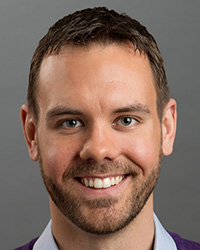 Kurt Gray
Kurt Gray
University of North Carolina at Chapel Hill
What is the focus of your award-winning research?
What do sexual objectification, psychopathy, religious belief, and the creepiness of humanoid robots all have in common? The answer is mind perception. How we see the minds of others can explain an incredible diversity of psychological phenomena, and even has the potential to unify moral judgments. Not only do questions of rights and responsibilities rest upon perceived mental capacities, but moral cognition is grounded in an implicit template of two perceived minds — an intentional agent harming a suffering patient.
My model of “dyadic morality” suggests that all immoral acts — even those that appear objectively agentless or harmless — are nevertheless perceived to involve a complete dyad of intentional harm. This phenomenon of “dyadic completion” explains why people see divine vengeance in natural disasters and harm to children in homosexuality. Dyadic morality also suggests the phenomenon of “moral typecasting” — the tendency to cast individuals into the role of either intentional agents or suffering patients. Moral typecasting explains why victims escape blame and why we ignore the pain of heroes.
Dyadic morality suggests a common cognitive template unifying cultural diversity in morality. Moral concerns may be descriptively different across cultures, but all involve perceived harm, whether to the body, group, or soul. Other lab research explores dynamic social phenomena, including paying-it-forward behavior, failures of Facebook activism, and agent-based models of group genesis.
How did you develop an interest in this area?
After a night stranded in the Canadian wilderness, stalked by lynx, psychology seemed better than my initial college major of geophysics. Although psychology afforded fewer helicopter rescues, the challenge of understanding subjective experience is exhilarating enough. Initially I was drawn to decision making and demonstrations of mental irrationality, reading the work of Robyn Dawes and Daniel Kahneman. If the mind faltered at problems of probability and value — for which there are objective answers — I wondered what hope there was for more subjective phenomena such as religion, morality, and free will. These interests led me to the work of Dan Wegner.
Who are your mentors and/or biggest psychological influences?
Any success I have in psychological science is owed to [the late] Dan Wegner; he was a colossus in the field and I am grateful to work in his shadow. Dan’s wit and vision were unparalleled, as was his ability to combine interesting real-world phenomena with clever psychological theories. I could never thank him enough for his mentorship, and will unfortunately never get the chance to try.
I must also thank people across four great institutions. At Waterloo, Phil Merikle, Derek Koehler, Erik Woody, Joanne Wood, and John Holmes were instrumental in getting me started in psychology. At Harvard, I was generously mentored by Dan Wegner, but also Carey Morewedge, Wendy Mendes, Josh Greene, Dan Gilbert, Nick Epley, and Mike Norton. At Maryland, the advice of Arie Kruglanski and Michele Gelfand were indispensable. At UNC, I am grateful for mentors Barb Fredrickson, Keith Payne, and Paschal Sheeran. I am also thankful to Kristen Lindquist and Lisa Barrett for showing me the power of constructionism. Finally, I must acknowledge the sweeping influence of my friends, coauthors, and students, who consistently help turn my mediocre ideas into better ones.
What unique factors have contributed to your early success?
I find failure to be a powerful motivator. My very first science project was in 4th grade, when I assessed “How long does cereal float?” (This was my mom’s idea.) Although I don’t remember the results, I do remember the taste of tears as the wind tore apart my poster on the way to school. I also remember my first 15 studies in graduate school — all complete failures. Call it dissonance, but each failure strengthened my resolve.
My training at Waterloo and Harvard, especially the mentorship of Dan Wegner, also contributed to my success. Dan encouraged me to draw ideas from everyday life instead of journal articles and to read widely, including philosophy, physics, and math; Borges, Asimov, and Huxley. He taught me how to make sense of the broader patterns of the mind by taking a step back and blurring my eyes a bit.
What does winning this award mean to you both personally and professionally?
It is an honor to be in the company of such distinguished scientists, especially in the name of Dr. Spence. I know Dan would be proud.
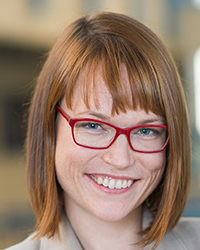 J. Kiley Hamlin
J. Kiley Hamlin
University of British Columbia, Canada
www.psych.ubc.ca/persons/kiley-hamlin
What is the focus of your award-winning research?
My research focuses on the very early development of social and moral cognition in infancy. My dissertation research was the first to discover that preverbal infants prefer “good guys” to “bad guys” — or prefer those individuals who help versus prevent third parties from achieving their unfulfilled goals. These preferences emerge by at least 3 months of age toward characters who help and hinder in a variety of physically and conceptually distinct goal scenarios; control conditions suggest that infants’ preferences do not stem from any low-level physical aspects of helping and hindering events.
Subsequent work has revealed that in at least some cases, infants’ social preferences are in striking alignment with ones that we might consider complex, even in older children and adults. For instance, within the first year after birth, infants evaluate helpers and hinderers based on their mental states rather than on the positive or negative outcomes they cause, and they evaluate characters who perform the very same action differently in different contexts, preferring those who hinder someone who previously harmed another rather than those who help across the board. These findings suggest that evaluating others as good and bad is general, is flexible, and is a fundamental aspect of humans’ earliest observations of the social world.
How did you develop an interest in this area?
My interests lie in the origins of knowledge in general, but particularly in how humans beings come to understand that others are agents whose actions are motivated by underlying and persistent mental states. As an undergraduate research assistant in Amanda Woodward’s infant cognition laboratory at the University of Chicago, I helped develop a selective reaching method to identify whether and when infants understand others’ object-directed actions as reflective of underlying intentions. When I began graduate school, I planned to continue this line of work with my advisor Karen Wynn.
Before I arrived in her lab, Karen’s postdoc Val Kuhlmeier (together with Karen and Paul Bloom) had developed a helping and hindering paradigm, in which a “Climber” repeatedly tried but failed to get up a hill, and would be pushed up the hill by a “Helper” or pushed down the hill by a “Hinderer.” As demonstrated via attention, infants subsequently distinguished events in which the Climber demonstrated a disposition to approach the Helper versus the Hinderer.
When I watched this stimuli, it occurred to me that while part of me cared about what the agent thought about the Helper and Hinderer, I was far more interested in what I thought about the Helper and Hinderer: I liked the Helper and I disliked the Hinderer. As one of the most important reasons humans mentalize (recognize mental states) at all is to be able to identify and avoid those who mean them harm, it struck me that examining infants’ evaluations of valenced intent might be a fruitful way to study infants’ understanding of agents more generally. Thus, we adapted the selective reaching technique to the helping/hindering scenario, and the work took off from there.
Who are your mentors and/or biggest psychological influences?
My advisors in graduate school, Karen Wynn and Paul Bloom, were each hugely influential in my thinking. Indeed, when I entered graduate school I believed very specific things about how infant social cognition (and the origins of knowledge more generally) worked; my theoretical stance was actually rather opposed to that of my new advisors. Rather than requiring me to align my stance to their own, Karen and Paul allowed me to run experiments that interested me, even if in each one we had completely different hypotheses about what infants would do and why. (They were often right; sometimes I was right.)
In the end, I felt compelled to endorse theories my advisors had always held — but I endorsed those theories based on the data we collected together and the studies I designed. I did not feel forced to bend to their stance without evidence. This was quite humbling and an incredible mentoring gift to receive; I hope I can provide it to my own students. In addition, my undergraduate advisor Amanda Woodward was an extremely supportive and attentive mentor who treated me as if my ideas were worthwhile even when I was a sophomore in college, showed me how to turn those ideas into empirical research, and subsequently spent hours crunching stats and editing manuscripts with me. In addition, Amanda was a fantastic model of a deep thinker and a careful scientist who is uniquely interested in discovering how the mind works.
What unique factors have contributed to your early success?
I attribute my early success to outstanding mentors who provided both support when I needed it and freedom when I did not, and to the incredible capacities of the infant mind. Of course, success was and still is a lot of hard work, but I am humbled by the amount of luck that is involved in making new discoveries. Indeed, our initial findings were based largely on a hunch that something interesting might happen and that it was worth a try to find out; we were floored by the robustness of the data that followed. To this day I feel amazed that infants are capable of the complex social evaluations they continue to demonstrate in my lab every day.
What does winning this award mean to you both personally and professionally?
It is a great honor to win this award. It is immensely gratifying to know that the topic I find so interesting and important is recognized by the greater psychological community and that my work is seen to have made a significant impact on the field of psychological science. Personally, this honor makes me feel as if all of the long hours are worth it; professionally I have no doubt it will lead to additional opportunities for future discovery. I am incredibly excited to see what comes next.
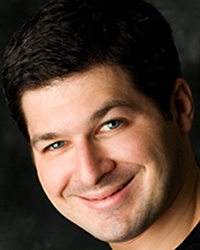 Ethan F. Kross
Ethan F. Kross
University of Michigan
selfcontrol.psych.lsa.umich.edu
What is the focus of your award-winning research?
Although the emotions we experience usually serve an adaptive function, sometimes they take hold of us in ways that are harmful, interfering with how we ideally want to think, feel, and behave. These are the situations that fascinate me. Broadly speaking, my research aims to illuminate how people can manage their emotions under such circumstances. I adopt an integrative approach to address these issues that draws on multiple disciplines within psychology, including social, personality, clinical, developmental, and neuroscience.
How did you develop an interest in this area?
When I was an undergraduate, I learned about a paradox in the literature on self-reflection and coping. Whereas many studies indicated that it was helpful for people to “work through” their negative experiences, other studies indicated that people’s attempts to do this often led them to ruminate and feel worse. Putting these findings together, the challenge that emerged was to understand how people can reflect on negative experiences adaptively. This basic question triggered my broader interest in self-control.
Who are your mentors and/or biggest psychological influences?
I met my two greatest influences at Columbia University, where I earned my PhD. Walter Mischel took me under his wing when I arrived. He was and continues to be all that I could have hoped for in a mentor. From day one he encouraged me to ask big questions that have the potential to change the way we think about phenomena.
My other greatest influence was Ozlem Ayduk. Oz was completing the final year of her post doc when I started graduate school. We immediately began working together when I arrived, and we haven’t stopped. We think about problems just differently enough to make our partnership profitable and fun. Oz taught me about the ins and outs of performing research. She’s been my role model from the beginning.
I was fortunate to work with several other people at Columbia, including Geraldine Downey, Kevin Ochsner, Ed Smith, Tor Wager, Rudy Mendoza Denton, and Tory Higgins. Each of them, in his or her own way, shaped the way I think about research. Fortunately, mentoring doesn’t end when you leave graduate school. My current colleagues and collaborators — there are unfortunately too many to name — continue to influence my thinking, as have the students that I have had the privilege of working with.
What unique factors have contributed to your early success?
I think it boils down to three factors:
First, I’ve been lucky to work with a number of exceptional psychologists over the course of my career; forward-thinking mentors, colleagues, and students with razor-sharp minds who are passionate about their work. There’s something infectious about working with people who love what they do and do it well.
Second, I’ve worked in departments that I think are truly exceptional. Although the psychology programs at Columbia and Michigan differ in many ways, they share an important attribute — both emphasize the importance of asking questions that matter using whatever methods are necessary to address them. This ethos has guided me throughout my career.
Finally, I have a wonderfully supportive wife and family. Without their encouragement, I probably wouldn’t be in academia.
What does winning this award mean to you both personally and professionally?
Looking at the past recipients of this award is a humbling experience. The fact that this award is given to a researcher whose work cuts across multiple areas of psychology — something that I have tried to do throughout my career — makes it all the more meaningful, both personally and professionally.
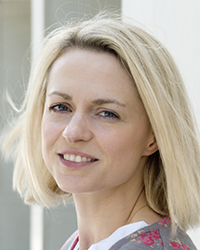 Angelica Ronald
Angelica Ronald
Birkbeck, University of London, United Kingdom
www.bbk.ac.uk/psychology/our-staff/academic/angelica-ronald
What is the focus of your award-winning research?
I have been conducting research on the genetic and environmental causes of autism and autistic traits for over 10 years. This topic is clinically important and continues to fascinate me. In my research I have employed family, twin, and genome-wide association study designs, amongst others. Another strand of my research explores the causes of psychotic experiences in adolescence. More recently I established an interdisciplinary collaboration to investigate how individual differences in attentional styles in infancy might predict later psychopathology. In sum, I aim to identify and understand causal predictors of complex disorders — such as autism and schizophrenia — across the lifespan from infancy to adulthood. Hence the name of my group, the Genes Environment Lifespan laboratory.
How did you develop an interest in this area?
It began with an interest in what causes people to be different. I admired my science teachers, read some inspiring books (such as The Man Who Mistook His Wife for A Hat by Oliver Sacks) and took notice of the New Scientist magazines knocking around my family home. During my undergraduate degree in Experimental Psychology at Oxford University I decided to pursue the themes of my two favorite modules, Abnormal and Developmental Psychology. It helps that the human brain is the most interesting thing in the world.
Who are your mentors and/or biggest psychological influences?
I’ve had admirable, intelligent, and generous scientists as mentors and supervisors throughout my career. I am grateful that at my PhD interview the panel felt that I had potential to think carefully, despite me dropping a large pile of papers in front of them all! Robert Plomin was an incredible supervisor from whom I learnt a lot. Francesca Happé was hugely supportive during my PhD and postdoctoral training. She is a role model as an eminent female scientist who is also a full-time working mother. I feel indebted to Tony Charman and Mark Johnson, whose support, characterized by “gentle nudges in the right direction,” has been invaluable since I joined Birkbeck in London.
What unique factors have contributed to your early success?
These won’t be unique factors, but I have a very supportive family. I don’t mind working at odd hours, and I like the variety of academic life. I have received some really good advice along the way. I recall a day when reviews for one of my first manuscripts came back from a journal. My supervisor said, “How people respond to reviews is a good indicator of how they will do in an academic career.” To me it seemed a wise comment: Criticism in science is often very helpful.
What does winning this award mean to you both personally and professionally?
Professionally, I am delighted if this award brings greater attention to work on the causes of conditions such as autism and schizophrenia and their related traits. Personally, I am honored to win this award, which has such an impressive list of past recipients and which comes from the eminent APS.
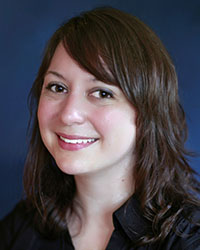 Leah H. Somerville
Leah H. Somerville
Harvard University
What is the focus of your award-winning research?
My lab’s research focuses on understanding the neurodevelopmental contributions to adolescents’ motivated, emotional, and social behavior. Adolescence is a phase of the lifespan in which affective–motivational, social, and regulatory processes are dynamically changing in ways that impact thoughts, choices, and emotional experiences. We believe that dynamic trajectories of brain development, which are thought to influence brain function in complex ways, play a key role in shaping the interplay between these processes and ultimately make adolescents unique compared to both children and adults.
Whereas trajectories of brain development confer remarkable benefits to adolescents’ well-being and abilities, we believe these trajectories also contribute to certain risks that threaten adolescents’ health. Our work combines multiple approaches (behavioral; psychophysiological; structural, functional, and connectivity brain imaging) to triangulate the relationships between neurodevelopment, adolescent behavior, and adolescents’ experiences in motivational, emotional, and social domains that might shed light on emerging risk for psychopathology and other negative health outcomes.
A long-term goal is to address the broader issue of how brain function dynamically supports variability in emotional and motivated behavior across people, over short and long timescales, and in diverse contexts.
How did you develop an interest in this area?
In my lab, we often joke that “research is me-search,” and I suppose I am a perfect example. I was an “angsty” teenager who experienced firsthand the confusions and emotional variability that many adolescents do. I continued to follow my interest in adolescent health risks during college, spending 4 years volunteering as a teen crisis counselor; I planned to go into social work. Late in college, I became exposed to the strong affective neuroscience community at the University of Wisconsin, and I became heavily involved with laboratory research in the area. I then continued to study cognitive and affective neuroscience through graduate school. It wasn’t until my postdoc that I began to apply empirical approaches to my early fascination with adolescent-typical behaviors like reward sensitivity, emotional lability, and sensitivity to peers. Seeing as one goal of my lab’s research is to reveal biological mechanisms of adolescents’ shifting experiences in these domains, I suppose I’ve come full circle.
Who are your mentors and/or biggest psychological influences?
I would like to dedicate this award to my mentors. My postdoctoral mentor BJ Casey took a real chance on bringing me into her lab in spite of the fact that I had no experience doing developmental research. I credit her for dedicating so much support and energy to my training, and for providing me solid foundations in developmental cognitive neuroscience.
I benefited from the joint mentorship of Bill Kelley (primary mentor) and Todd Heatherton and Paul Whalen (secondary mentors) during my graduate studies at Dartmouth College. Through Bill I was exposed to rigorous brain-imaging methodology, and my research on sustained emotion was strongly influenced by his expertise in the role of the prefrontal cortex in task-set maintenance. Todd encouraged me to view my interests through a social-contextual lens and regularly provides career guidance. Paul has influenced my thinking about emotion through a learning and vigilance framework, and instilled in me the value of translational research. I credit all of my graduate mentors for encouraging my independence. I also thank mentors from Wisconsin, Ned Kalin and Tom Johnstone, for emphasizing the utility (dare I say necessity) of considering individual differences when studying emotional processes.
Currently, my strongest influences are my colleagues at Harvard and in the greater Boston area, especially Mahzarin Banaji, Lisa Feldman Barrett, Joshua Buckholtz, Randy Buckner, Avram Holmes, Jill Hooley, Jerome Kagan, Ellen Langer, Jason Mitchell, Joe Moran, Charles Nelson, Matthew Nock, Margaret Sheridan, Nao Uchida, and John Weisz. Interacting with them challenges me to examine my own work from diverse perspectives.
What unique factors have contributed to your early success?
I would not be able to do this work without the members of my lab, who teach me every day. Their intellect and dedication is inspiring, and their enthusiasm for science is contagious. Channeling their energy and ideas (and providing the coffee) is the only thing I can really take credit for.
Beyond that, my work cannot be categorized into a single domain of psychology. My research has been described every which way, from social to clinical to developmental. I used to see the uncategorizable nature of my work as a weakness, worrying that by stretching everywhere, I fit nowhere. However, it seems that a new wave of psychological scientists sit in the center of many areas the way I do, and whatever successes we’ve had speaks to the value of interdisciplinary research.
What does winning this award mean to you both personally and professionally?
I am humbled by this honor, especially because it is named after Janet Taylor Spence, a tenacious scientist and role model. Most of all, I appreciate having a platform to acknowledge all the remarkable people who shape my thinking and make science fun.





APS regularly opens certain online articles for discussion on our website. Effective February 2021, you must be a logged-in APS member to post comments. By posting a comment, you agree to our Community Guidelines and the display of your profile information, including your name and affiliation. Any opinions, findings, conclusions, or recommendations present in article comments are those of the writers and do not necessarily reflect the views of APS or the article’s author. For more information, please see our Community Guidelines.
Please login with your APS account to comment.